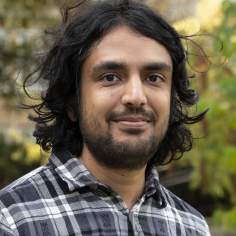Optical atomic clocks are our most precise tools to measure time and frequency. Precision frequency comparisons between atoms in separate locations can be used to probe the space-time variation of fundamental constants, the properties of dark matter, and for geodesy. Such frequency comparisons on independent systems are typically limited by the standard quantum limit (SQL). Here, we demonstrate the first quantum network of entangled optical clocks using two 88Sr+ ions separated by a macroscopic distance (2 m), that are entangled using a photonic link. We use this network to perform entanglement-enhanced frequency comparisons beyond the SQL[1]. This two-node network could be extended to additional nodes, to larger entangled systems via local operations, or to other species of trapped particles. Towards the latter goal, we have incorporated mixed-species operations to map the ion-photon entanglement from Sr+ ions to co-trapped 43Ca+ ions, which can be used as a memory qubit[2]. We are able to extend the coherence time of the ion-entanglement up to 10 s.
[1] Nichol, Srinivas et al., Nature 609, 689-694 (2022)
[2] Drmota et al., PRL 130, 090803, (2023)

